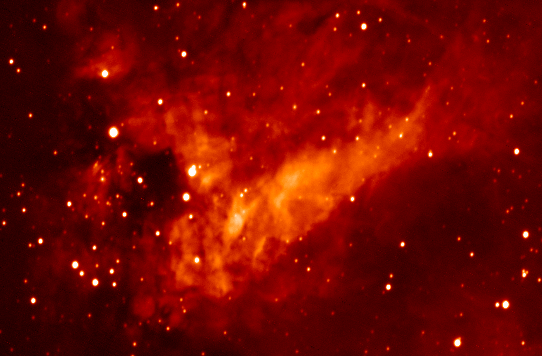Credit & Copyright: B. Wallis and R.
Provin
Explanation:
What unusual eggs have been laid by this majestic swan?
The star forming region above, known as
Swan Nebula,
is the home of hot red-glowing
gas, dark lanes of
dust,
bright young stars and -- what are those?
Of the few stars visible in the
Swan Nebula,
several have quite unusual colors and are
hypothesized to be very young stars still shrouded by gas from the cloud
that formed them. The
Swan
Nebula is quite large and massive as it contains
roughly 1000 times the mass of our
Sun. The bright central region is about
15 light years across lies about 5000 light years away toward the constellation of Sagittarius. The distinctive shape causes this region to
have several other names, including the Omega Nebula, the Horseshoe Nebula,
and the Lobster Nebula.
1999 2000 2001 2002 2003 2004 2005 2006 2007 2008 2009 2010 2011 2012 2013 2014 2015 2016 2017 2018 2019 2020 2021 2022 2023 2024 2025 |
Январь Февраль Март Апрель Май Июнь Июль Август Сентябрь Октябрь Ноябрь Декабрь |
NASA Web Site Statements, Warnings, and Disclaimers
NASA Official: Jay Norris. Specific rights apply.
A service of: LHEA at NASA / GSFC
& Michigan Tech. U.
|
Публикации с ключевыми словами:
M 17 - Области звездообразования - молодые звезды
Публикации со словами: M 17 - Области звездообразования - молодые звезды | |
См. также:
Все публикации на ту же тему >> | |
